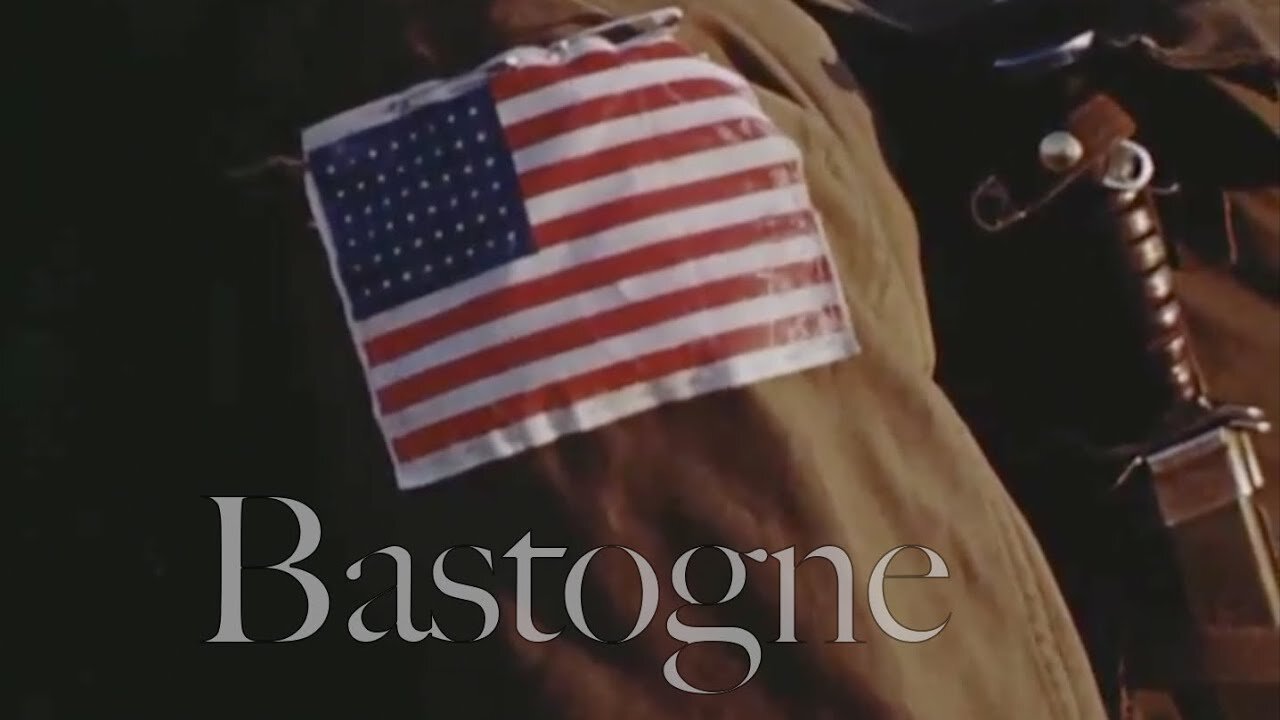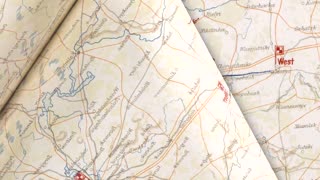Premium Only Content

Battle of the Bulge, restored COLOR FOOTAGE by George Stevens - DESTRUCTION OF BASTOGNE 1945
🔥PREVIEW ALL YOUTUBE VIDEOS
www.Patreon.com/Military1945
Episode 234
ORIGINALS for sale...
https://www.militaria1945.com
The siege of Bastogne was an engagement in December 1944 between American and German forces at the Belgian town of Bastogne, as part of the larger Battle of the Bulge. The goal of the German offensive was the harbor at Antwerp. In order to reach it before the Allies could regroup and bring their superior air power to bear, German mechanized forces had to seize the roadways through eastern Belgium. Because all seven main roads in the densely wooded Ardennes highlands converged on Bastogne, just a few miles away from the border with neighboring Luxembourg, control of its crossroads was vital to the German attack.
The German offensive began on 16 December. Although outnumbered, the regiments of the 28th Infantry Division delayed the German advance towards Bastogne, allowing American units, including the 101st Airborne Division, to reach Bastogne before the German forces surrounded the town and isolated it on 20 December. Until 23 December, the weather prevented Allied aircraft from attempting to resupply Bastogne or from performing ground attack missions against German forces. The siege was lifted on 26 December, when a spearhead of the 4th Armored Division and other elements of General George Patton's Third Army opened a corridor to Bastogne.
BACKGROUND
After the successful invasion of Normandy and the subsequent eastward push through France, the Allied front lines extended from Nijmegen in the north down to neutral Switzerland in the south. The valuable port city of Antwerp had been captured during the push, and by the time winter arrived, the Allies even had control of German territory near the city of Aachen. Adolf Hitler soon laid out a plan to attack the Allied lines in Belgium and Luxembourg; 25 divisions would launch a surprise attack through the Ardennes, with the aim of crossing the river Meuse (called Maas in German and Dutch) and recapturing Antwerp. Despite major misgivings from his senior commanders, including Gerd von Rundstedt and Walther Model, the plan was not modified and the jump-off date was eventually set as 16 December 1944. Meanwhile, the Allied commanders considered the Ardennes area to be unsuitable for a large-scale German attack, mainly because of terrain issues. In addition, intelligence reports suggested that the only German divisions stationed in the area were weary, and in the weeks leading up to the assault, no Allied commander saw reason to believe that an attack was imminent. Bastogne, a hub city that commanded several important roads in the area, was defended mainly by the 28th Infantry Division, which had seen continuous fighting from 22 July to 19 November, most recently in the Battle of Hürtgen Forest, before being assigned to this relatively quiet area. The Allies believed only an infantry division was present opposite the 28th Infantry, and they believed any attack along this sector would be limited in scale. The seven roads in and out of Bastogne were critical to the movement of German armor, making Allied retention of the roads imperative.
Hasso von Manteuffel—commanding the 5th Panzer Army—gave Heinrich Freiherr von Lüttwitz′s XLVII Panzer Corps the responsibility of capturing Bastogne, before crossing the Meuse near Namur. Lüttwitz planned to attack a 7 mi (11 km) front with three divisions: the 26th Volksgrenadier and the 2nd Panzer would lead the assault, with the Panzer-Lehr-Division behind them. Opposing this significant force were two battalions of the 110th Infantry Regiment (the third was held back as a division reserve), responsible for a 9 mi (14 km) front along the river Our which forms the border between Germany and neighboring Luxembourg. The Allied forces were gathered into small groups at major Luxembourgish villages, with outposts along the river manned only during the daytime. The forces were too thin to maintain an even battle line, they focused their attention on the four roads that crossed the Our. Due to heavy rain preceding the German attack, only one of the roads was in good enough condition to be used as a crossing point—the northernmost road, which crossed the Our at Dasburg on its way to the Luxembourgish town of Clervaux (in German: Klerf, in Luxembourgish: Klierf) and Bastogne. The 2nd Panzer Division was assigned to cross the river along this road, while the 26th Volksgrenadier Division would construct a bridge near Gemünd for its crossing. Lüttwitz realized the importance of the road network of Bastogne—he knew that the town had to be captured before his corps could venture too far westward. Therefore, he ordered the Panzer-Lehr Division to push forward to Bastogne as soon as his other troops had crossed the river Clerve in Northern Luxembourg.
-
 8:21
8:21
Military1945
4 days agoWar diary from a platoon leader from the SS Div. Reich (mot) during the advance on Moscow - Part 10
688 -
 1:08:28
1:08:28
In The Litter Box w/ Jewels & Catturd
23 hours agoCrenshaw Threatens Tucker | In the Litter Box w/ Jewels & Catturd – Ep. 749 – 2/25/2025
63.1K38 -
 44:57
44:57
Standpoint with Gabe Groisman
1 day agoWill Byron Donalds Run for Florida Governor? With Congressman Byron Donalds
25.6K6 -
 1:06:25
1:06:25
Savanah Hernandez
3 hours agoEXPOSED: FBI destroys evidence as NSA’s LGBTQ sex chats get leaked?!
42.1K15 -
 1:59:58
1:59:58
Revenge of the Cis
5 hours agoEpisode 1452: Hindsight
37.5K3 -
 1:20:35
1:20:35
Awaken With JP
7 hours agoCrenshaw Threatens to Kill Tucker and Other Wild Happenings - LIES Ep 80
92.4K64 -
 1:32:19
1:32:19
Russell Brand
5 hours agoBREAK BREAD EP. 15 - LECRAE
105K10 -
 1:37:26
1:37:26
The Officer Tatum
6 hours agoLIVE Rachel Maddow, Don Lemon MELTDOWN Over Joy Reid's FIRING! + More Ep 68
68K31 -
 1:11:24
1:11:24
The Gateway Pundit
4 hours agoEpstein & JFK Files BLOCKED: Luna’s SHOCKING Clash with Pam Bondi! | Elijah Schaffer & Jim Hoft
119K43 -
 1:12:42
1:12:42
John Crump Live
8 hours ago $0.45 earnedFake Gun Advocates.
9.06K1